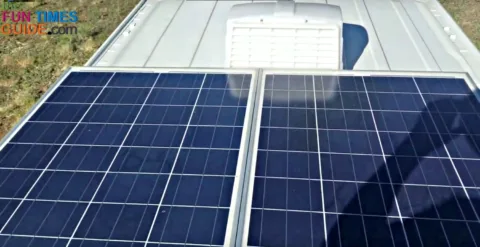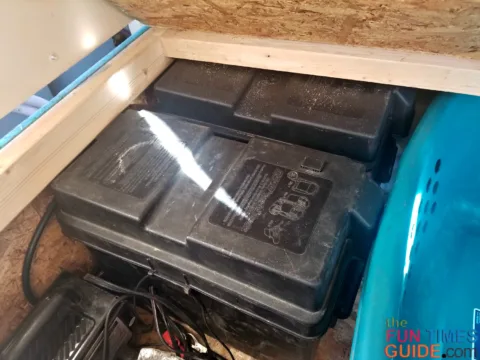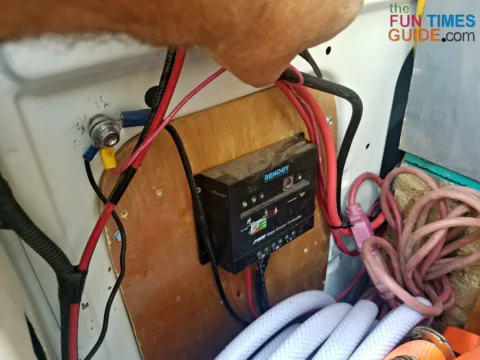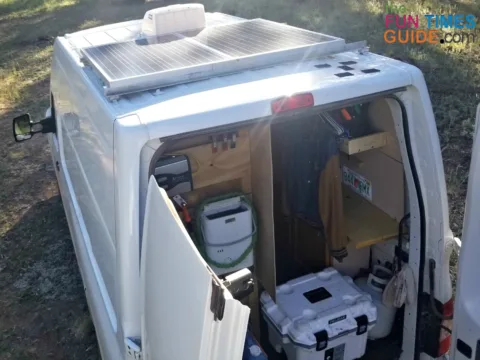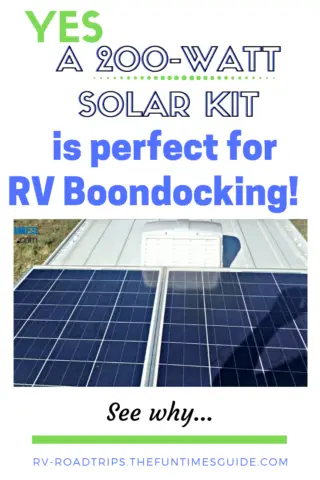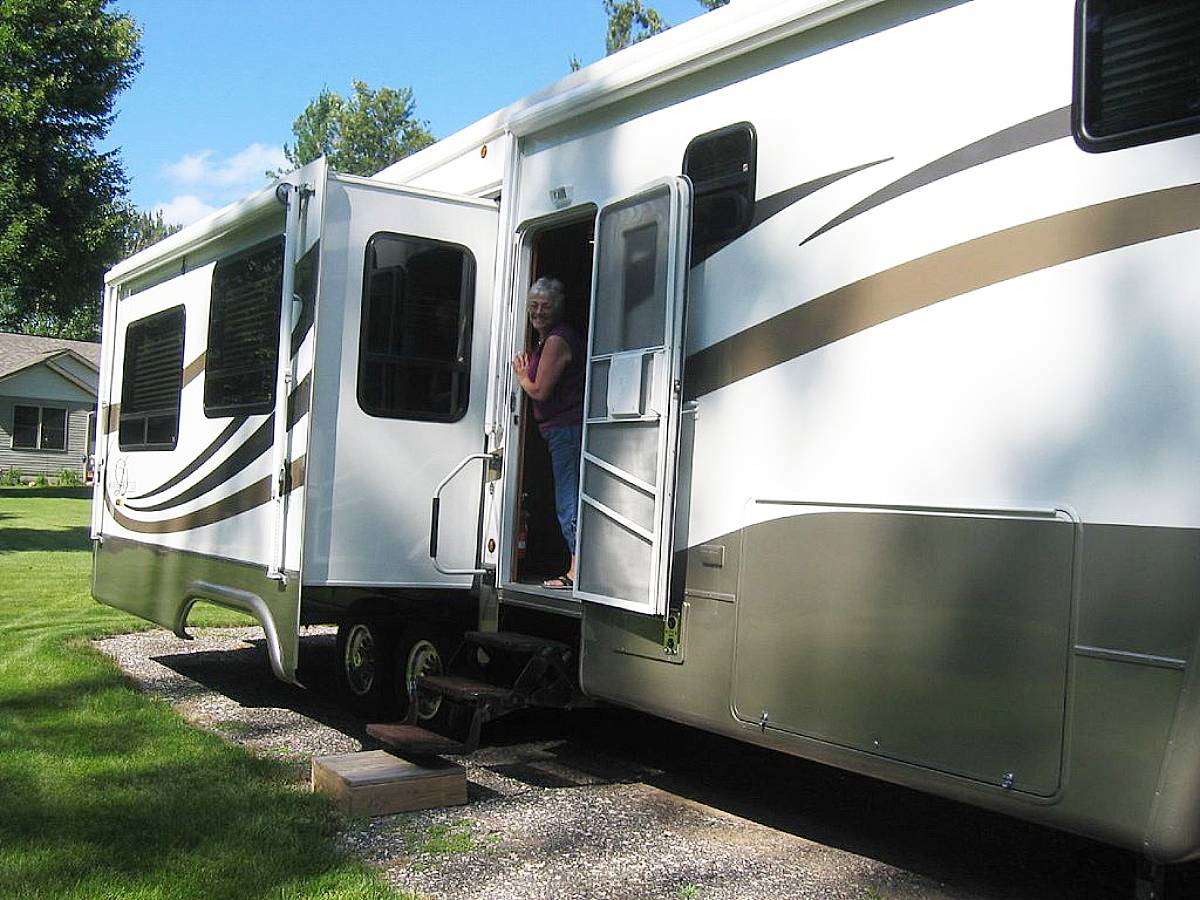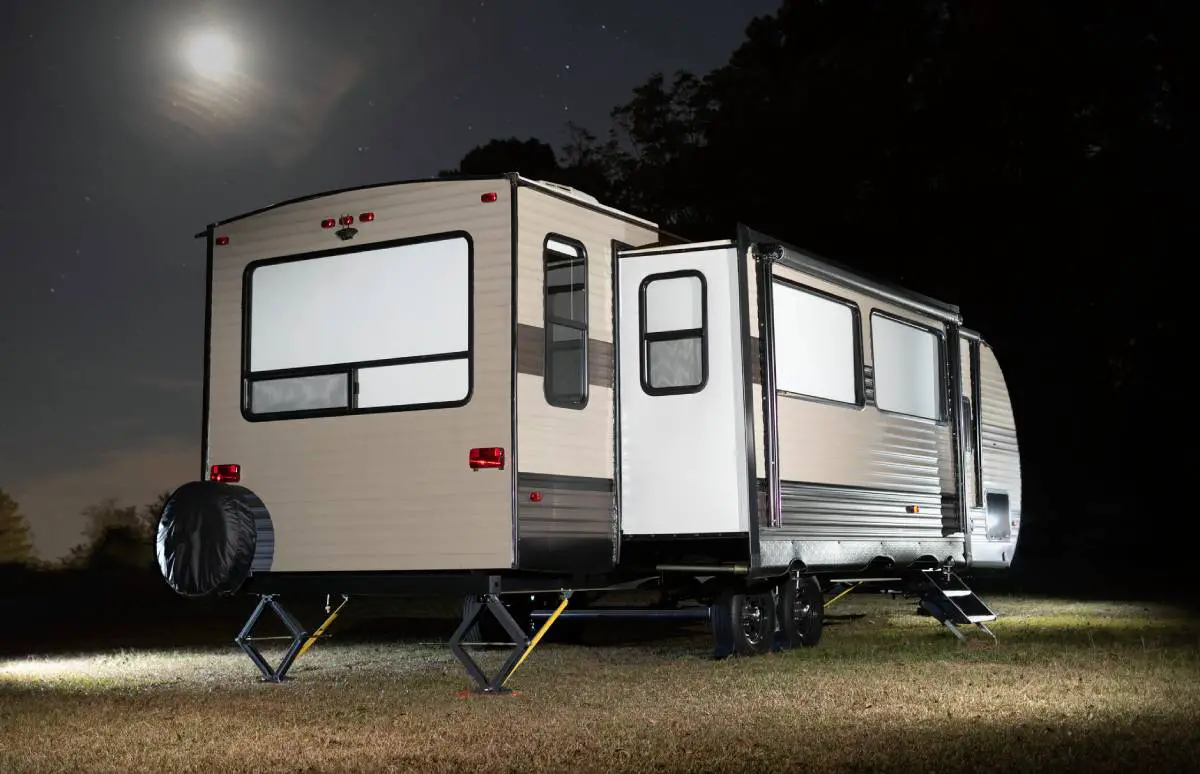When it comes to seriously looking at solar power as a dedicated source of electricity when boondocking, a great place to start is a 200-watt RV Solar Kit.
It’s a good place to start because all major components are included in one package — ensuring that you will match all of the appropriate components together your very first time.
Here are my thoughts regarding the use of a 200-watt RV Solar Kit for boondocking…
Is 200 Watts Enough?
Yes, 200 watts is enough power to actually get some work done.
If refrigerated food storage is your main concern (as it was mine), 200 watts is enough to power a 12-volt compressor refrigerator endlessly if the sun stays out.
A battery bank of two 120-amp hour lead acid batteries from Walmart will be enough to carry you through the night until the sun comes back out in the morning.
You will likely have enough power in reserve to occasionally watch a little television, too.
Yep… for an investment of around $500, you are off and running!
The only time you’ll need to rely on a generator or other means of power is when the sun doesn’t come out for a few days in a row.
What To Look For In An RV Solar Kit
If you ask 20 people what’s the best RV Solar System for your needs, I’m sure you will get 20 different opinions.
I fully agree there are some top-shelf components out there that have darn fancy price tags to go with them.
For example, you could invest in lithium batteries at about $1,000 a pop. Sure, they will give you 10+ years of service and they can be drawn down to practically nothing without harming the battery. But is that level of performance really necessary?
For my needs, a $100 lead acid deep-cycle battery from Walmart is more than adequate. It it will give me 4 to 5 years of service for 1/10th the cost.
The key is to have a sufficient battery bank — to prevent drawing the voltage down below 12 volts.
A straightforward 12-volt Solar System with two 100-watt panels wired in parallel and routed through a 30-amp charge controller will provide years of trouble free service!
Digital readout on the charge controller is a nice touch — but a simple $5 digital voltmeter mounted where you can see it conveniently works great. It will keep you informed as to how much power you have.
Keeping the voltmeter reading above 12.0 volts will assure that your batteries are happy.
Must read: What’s The Difference Between A Voltmeter And A Multimeter?
You Can Always Add More
Another important consideration is the fact that starting with a 200-watt RV Solar System does not prevent you from expanding and adding more solar power in the future.
Currently, I have a total of 700 watts of power provided by three 200-watt RV Solar Kit systems and one portable 100-watt Solar Suitcase system.
Redundancy can be a good thing. With multiple Solar Systems working together… if you lose one part of the system, you will still have power!
The Bottom Line
If your knowledge of solar power is limited, there isn’t a better way to get started building your own RV Solar System than with an RV Solar Kit that allows for future expansion.
In this video, I’m showing how to install a reliable 200-watt Solar System on your RV:
Like this post? Save it to read again later… or share with others on Pinterest!
I’ve been involved in RVing for over 50 years — including camping, building, repairing, and even selling RVs and motorhomes. I’ve owned, used, and repaired almost every class and style of RV ever made. I do all of my own repair work. My other interests include cooking, living with an aging dog, and dealing with diabetic issues. If you can combine a grease monkey with a computer geek, throw in a touch of information nut and organization freak, combined with a little bit of storyteller… you’ve got a good idea of who I am. To date, I’ve shared my RV knowledge in over 300 articles here at The Fun Times Guide! Many of them have over 25K shares.

